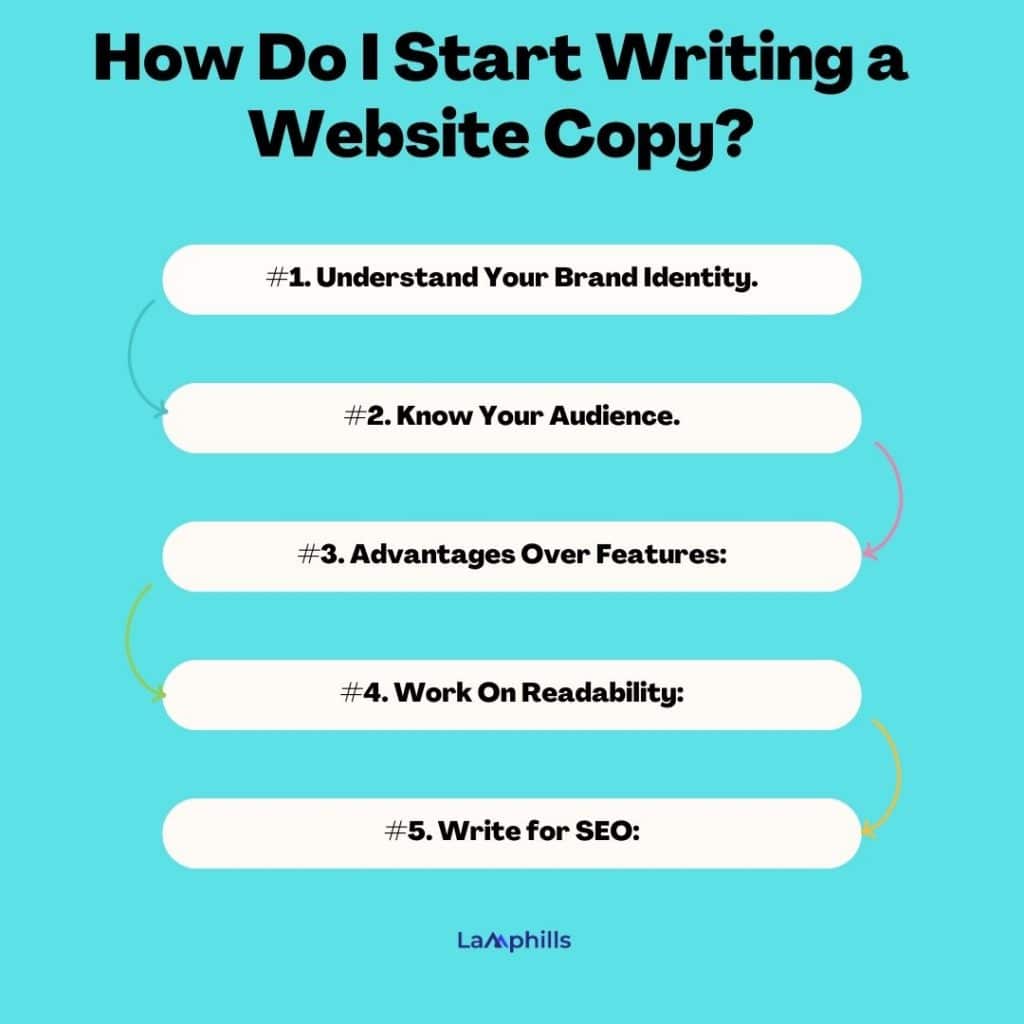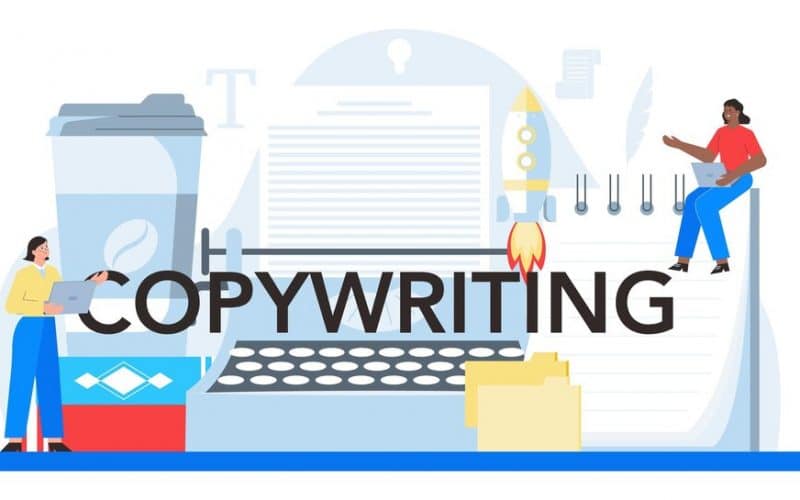Creating high-quality leads with a well-crafted website copywriting plan helps you gain relevant internet visitors who are searching for the information you provide. However, you won’t get the desired results if you keep creating too much identical or irrelevant content and don’t update your older posts.
Therefore, in this post, I will take you through 12 Sure Tips for Improving Your Conversions Using Website Copywriting, whether you’re trying to start or improve your website copywriting. But first, let’s go over some copywriting fundamentals before moving on to the tips for increasing conversions.
Key Points:
- The main goal of website copywriting is to persuade and convert customers for sales and actions.
- Copywriting It’s often clearer and briefer, concentrating on strong calls to action.
- Conversion rates, sales numbers, and click-through rates measure the success of website copywriting.
- Effective copywriting fundamentals include the use of eye-catching headlines, compelling CTAs, persuasive language, and search-engine-optimized content.
- Copywriting looks to persuade readers of the benefits of a product or service.
What Is Website Copywriting?
Website copywriting is the process of creating content for your website through writing. It can appear as blog posts, company announcements, landing pages, or wherever else textual content on a webpage would be found.
Furthermore, the best part is that improving your website’s organic traffic and conversions may be done for free with website copywriting. Nevertheless, creating the ideal content for your website requires a lot of work.
Now that you are familiar with website copywriting basics, let’s go over the 12 best website copywriting tips to help you drive even more conversions.
How to Practice Website Copywriting?
Copywriters employ a variety of strategies to improve a website’s conversion rate, but I will list the top and most useful ones below:
#1. Copywriting 101: Understand Your Audience.
If you do not know who you are writing for, you cannot write content that converts. Research the people who make up your target market. What issues are they facing? What are their objectives and what matters to them? Composing text that appeals to your audience’s interests and motivates them to take action will be easier if you know who they are.
Read BRAND RESONANCE: Elevating Brand Resonance Through Experiential Engagement
#2. Important Information Should be Frontloaded.
Frontloading content is another technique to guarantee that users see the most crucial information. Stated differently, start your article with the most vital information and move on to the specifics later.
For long-form content, such as blog posts and articles, it is particularly crucial. Since people’s attention spans are shorter than ever, you must grab their interest from the beginning and keep it throughout the entire piece.
#3. Write Brief Paragraphs.
Readers do not like reading long text blocks. Therefore, your paragraphs should ideally be succinct and lovely. Your copy will be easier to read and scan with this addition. Because of this, readers won’t become disinterested in the middle of a lengthy paragraph.
#4. Make Use Of Bullet Points.
You can divide your text into manageable chunks and make it easier to read by using bullet points. They’re also excellent at making sure important information is noticed by emphasizing it. Therefore, to make your writing easier to read, if you want to incorporate a lot of information, think about adding bullet points.
#5. Make Use Of H-Tags.
Another excellent technique to break up the text and make it easier to read is to use headings. They help your readers to comprehend the composition’s organization and speed up their search for specific information. Make extensive use of headings in your writing to maintain organization and readability.
To break it down, note that:
- H1 = Main keywords and subject matter—what the overall post is about.
- H2 = Sections to break up content, using similar keywords to the H1 tag.
- H3 = Subcategories to further break up the content, making it easily scannable.
#6. Understand Why You Are Writing.
As you write website copy, it’s critical to understand the “why” behind the piece. Put differently, what is the copy for? Do you intend to sell anything? Is it to encourage the use of a service? or instruct your readers. Knowing the copy’s meaning can help you adjust your message and make sure it supports your objectives.
#7. Avoid Using Complex Words And Be Concise.
Generally speaking, copywriting is best when it is simpler. So refrain from using terms and phrases that are overly complicated. Make sure your wording is understandable and appealing to your readers. By doing this, you can make sure that your material is easy to read and comprehend.
Furthermore, being brief is a crucial copywriting strategy as well. By using this approach, you may cut out any filler or filler content and go right to the point. So use fewer words to explain yourself if you can! It will assist in improving the impact and directness of your copy.
#8. Write The Way You Speak.
Writing website copies requires paying attention to what you say. This means that you should speak naturally and understandably. Avoid using jargon or technical terminology that they might not understand. By doing this, you can make sure the copy is readable and relatable.
Read Also: Creative Briefs: Tips on How to Write One (+Template & Sample)
#9. Don’t Use Buzzwords Too Much:
It’s not the purpose of copywriting to impress readers with arcane vocabulary or technical terms. The main purpose of website copywriting is to convey a point succinctly and clearly. Therefore, to prevent confusing your readers, refrain from overusing jargon or technical terms. Use words that your reader may easily understand and relate to.
#10. You Should Focus On Advantages:
Persuasion is the main goal of copywriting. Therefore, highlighting the advantages is a powerful strategy for getting someone to do something. Thus, when crafting copy, emphasize the advantages of executing the intended action. People will be inspired to take the risk and become clients or customers.
#11. Take Short Breaks.
Copywriting is not a sprint; it’s a marathon. Do not try to achieve everything at once. Taking a break between versions allows you to revisit the work with a new perspective and identify any mistakes or typos. It guarantees that your writing is flawless and prepared for publication.
Furthermore, make sure to remove any superfluous words from your copy when you’re editing it. It consists of items like superfluous words, redundant sentences, and filler words. Eliminating these superfluous words will improve the clarity and impact of your writing.
#12. Edit Carefully:
It’s not necessary to do everything perfectly the first time while copywriting. It involves editing and polishing until you have a polished, powerful piece of writing. Thus, don’t hesitate to make harsh edits. Remove anything that isn’t necessary, and make sure that each word matters. It will take a lot of work, but in the end, it will be worthwhile.
You now understand the fundamentals, but how can one create compelling website copy? Below, I have included templates and examples that should motivate you to write the best copies on your website.
Website Copywriting Template
Website Copywriting Examples
#1. GymIt:
GymIt attracts consumers and conveys this through humorous advertisements about feigning a move to avoid a contract. The business is aware of its target market and knows exactly how to pique interest and produce a smile.
At GymIt, I’ve always adored the copies because:
- GymIt’s copy aligns with its “About” page philosophy, which states that working out should be the only purpose of a gym.
- They are aware of their primary audience. The wording and other marketing materials demonstrate a thorough comprehension of its target audience.
#2. Primary:
Primary makes their goal apparent on the homepage, and they do a great job of addressing parents who want their children to grow up well-adjusted. They do a fantastic job of demonstrating to customers that they are a distinct company and providing them with two excellent shopping options: by age or by color.
At Primary, I’ve always adored the copies because:
- The About page explains the founders’ dissatisfaction with the children’s clothing industry and the changes they intend to make.
- They set a benchmark that customers can anticipate when they purchase from Primary by addressing the typical worries of parents.
- Their copywriters persuade readers to subscribe to their email list by offering a 20% discount on initial orders.
#3. Articulate
Articulate offers copies that are corny but positive, and it helps them connect with clients and job seekers. Since most people prefer to be more than just a cog in a company’s machine, Articulate distinguishes itself from other corporate rivals by including humor.
Check out this article to help you understand the difference between Copywriting vs. Content Writing: Which Skills Make More Money?
What is SEO Copywriting?
SEO copywriting is the process of creating material that has been optimized for keywords and is intended to be readable by both search engine algorithms and people. Put another way, writing material that Google can understand is SEO copywriting.
How Long Does It Take A Copywriter To Write A Website Copy?
Depending on the length, goal, and tone of the copy, the required amount of research and SEO, and the number of revisions and approvals, the completion time for web copy can range from a few hours to several days.
How Do I Start Writing a Website Copy?

#1. Understand Your Brand Identity.
Ensure that your site’s branding is the same throughout. This covers not just your style, tone of voice, and formatting, but also your visual components like your fonts, colors, and logo. Regardless of the platform, a successful brand should be recognizable and consistent.
Read Also: Brand Identity 101: Getting the Basics Right From the Start
#2. Know Your Audience.
How can you hope to get those crucial conversions if you have no idea to whom you are trying to market your goods or services? Everything from your visual branding and tone of voice to where you sell and promote your items will be impacted by defining your target.
#3. Advantages Over Features:
Show your customers how you and your company can improve their lives, rather than merely telling them what your brand stands for. Emphasizing the advantages of your goods or services rather than merely their qualities is one way to achieve this.
#4. Work On Readability:
The content on your website should be easy to read, succinct, and clear. Note that you have 50 milliseconds to make an impression on visitors and win their loyalty. Don’t let lengthy, dull, and badly organized material cost you valuable conversions.
#5. Write for SEO:
Having a solid understanding of how to write for SEO will eventually make the difference between a successful website and one that performs poorly. This includes conducting thorough keyword research and making sure your meta description is optimized to ensure that you get the best first impressions.
Related Articles:
15 Creative PR Email Templates to Boost Your Outreach Success ( Plus Tips on Writing One)
Mastering Business Grammar: Rules and Tips for Professional Writing
Content Writer Job Description: Attracting Top Writing Talent






